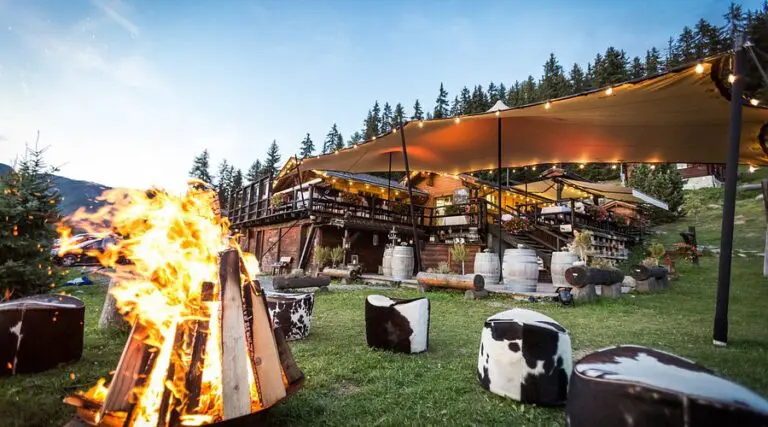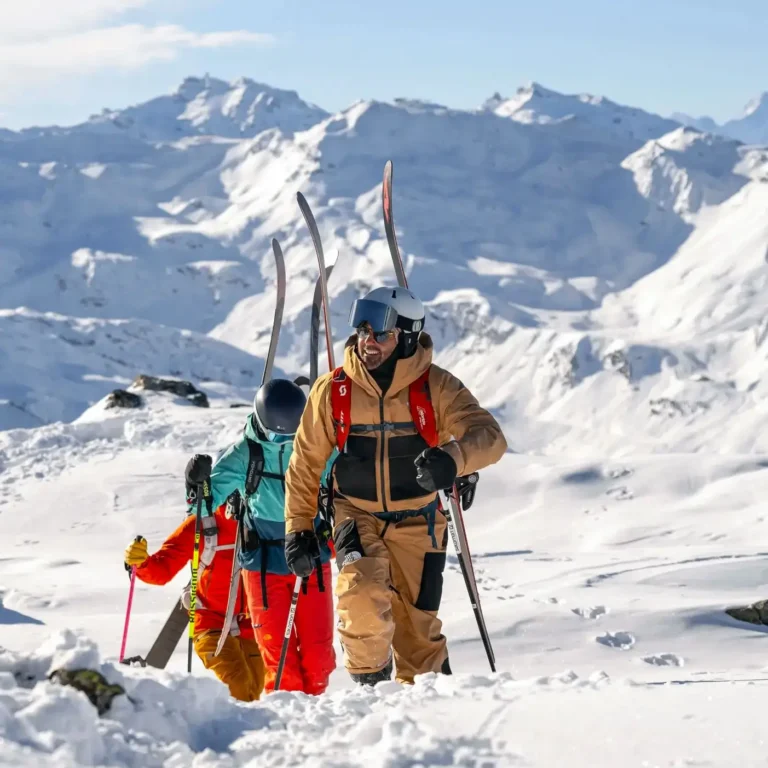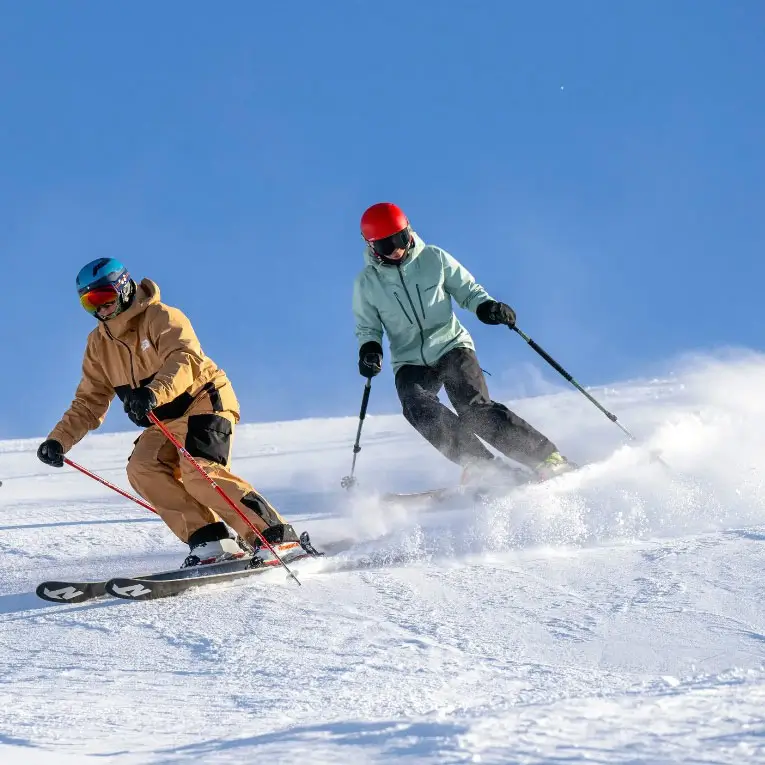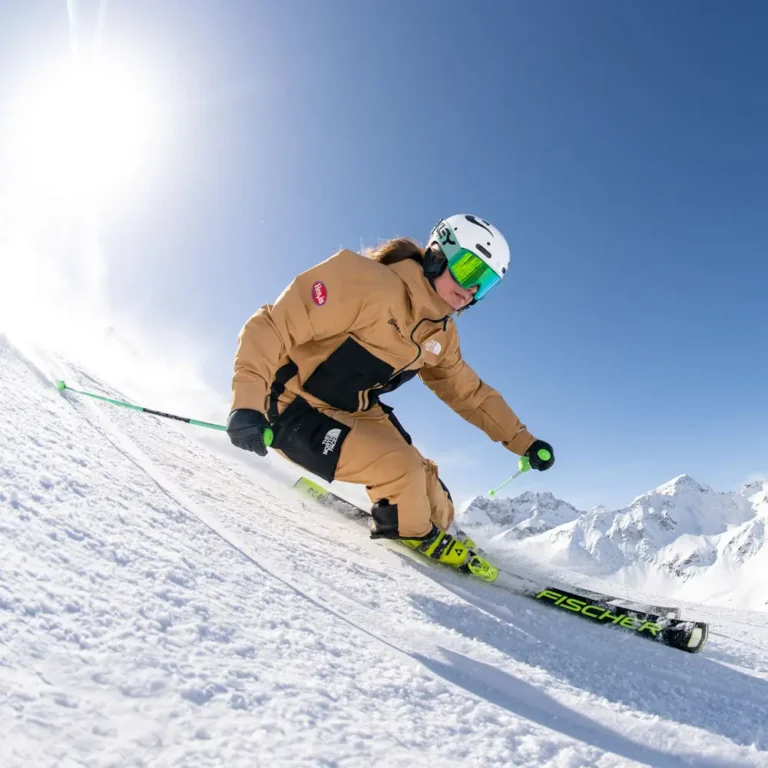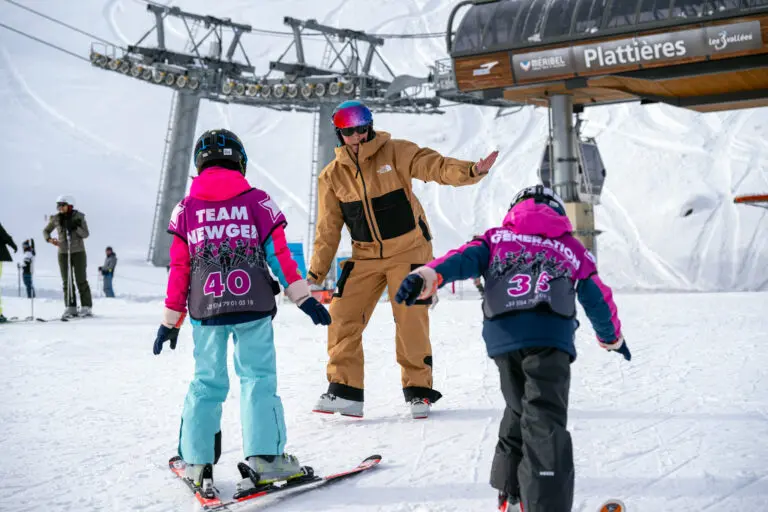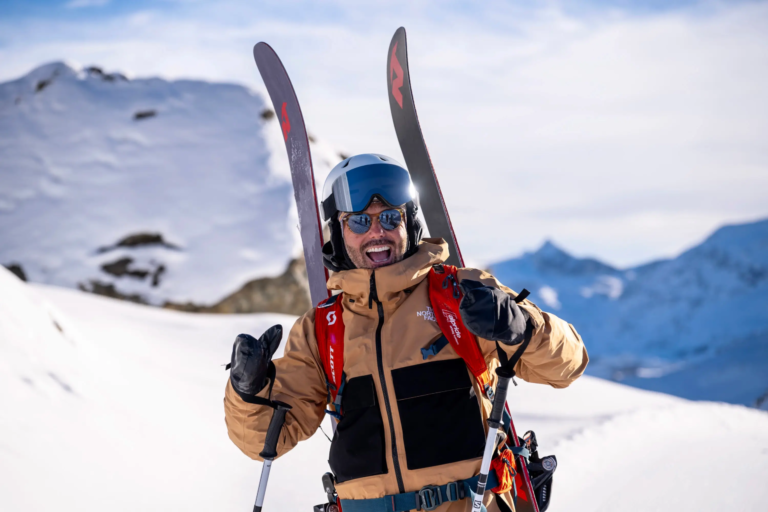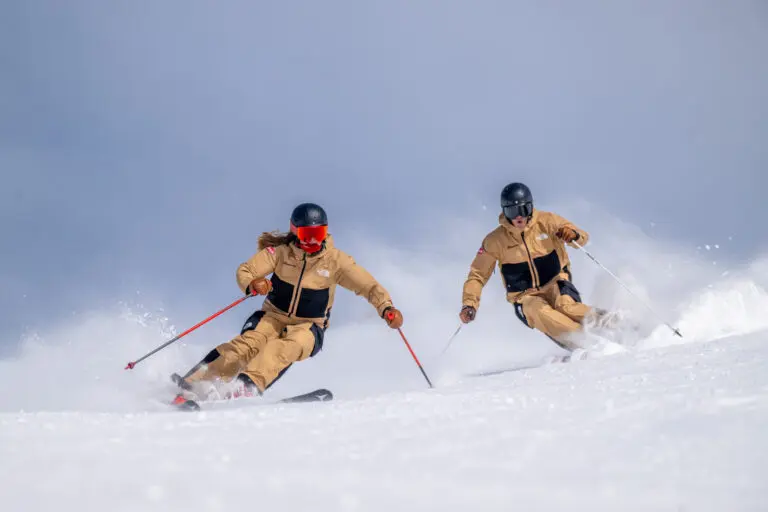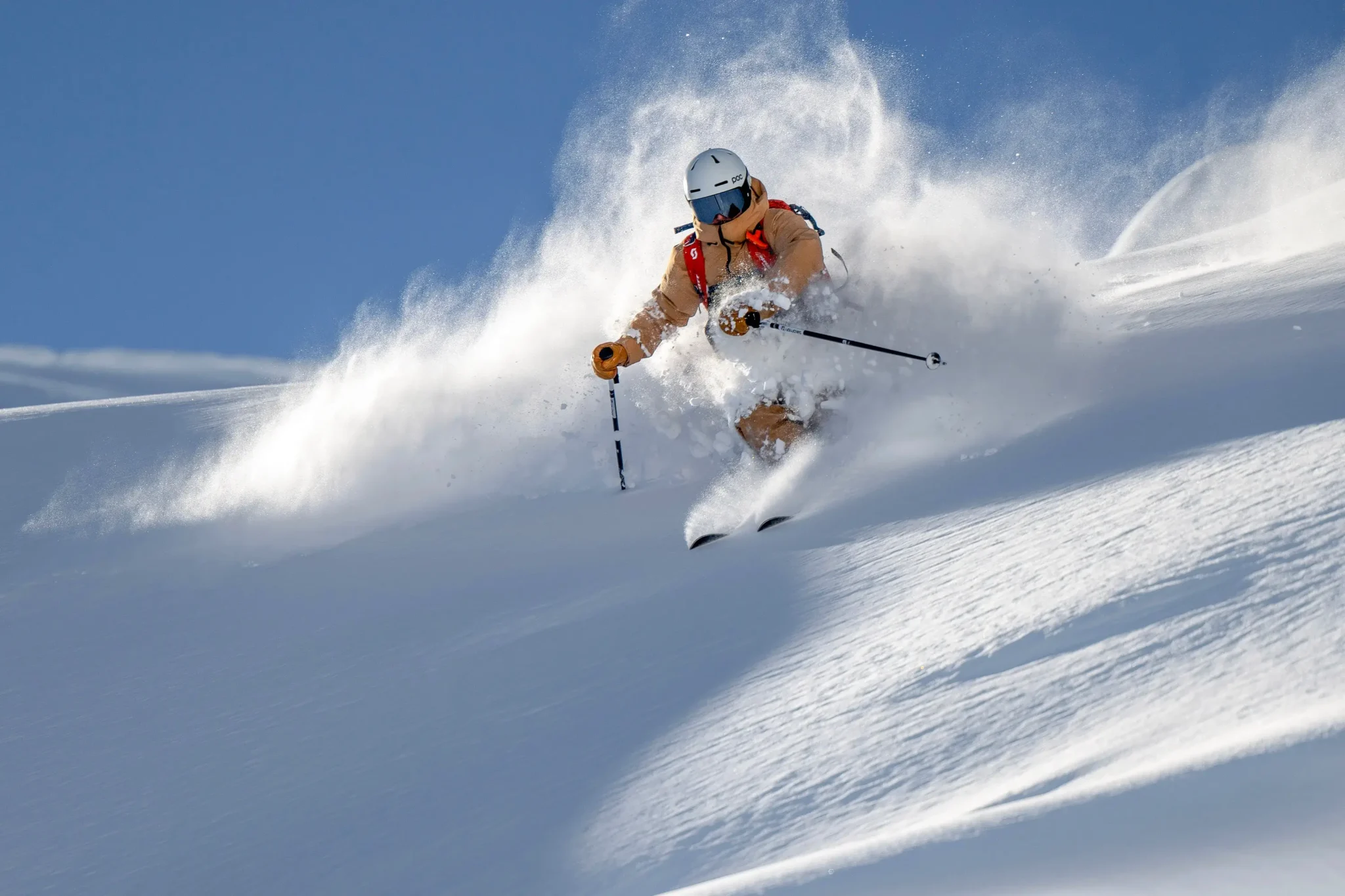Dressing your child well for skiing can be the difference between loving or hating it. Cold hands, feet or face, rubbing boots or an uncomfortable helmet can all ruin their day, which likely means it will destroy your day, too! But when it comes to kids’ ski clothing, how many layers do they need?
We’re here to simplify things whilst ensuring your child is appropriately dressed for skiing.
DRESS FOR SKIING SUCCESS – KIDS SKI CLOTHING
Keeping kids warm and comfortable is the most crucial thing in skiing. We want to keep things simple and apply the same layering system to kids and adults.
Just as our instructors do, we recommend children wear multiple thin layers they can take off or add on throughout the day as the weather changes (as it so often does!) Your child will need:
- A base layer
- A mid layer
- An outer layer
Alongside other vital pieces of clothing like quality socks, warm gloves or mitts and goggles. Here are a few tips for starting your first ski trip.
Ways to keep their body warm and toasty
Three different layers to keep your child cosy and warm on the slopes and whilst playing in the snow. These three layers trap the heat, preventing any cold from getting in, and the waterproof outer layer prevents any moisture from getting to their skin.
Thermal top (base layer)
In the morning, a thermal long-sleeved top is the first thing to put on when dressing your child for skiing. We suggest tucking their thermal top into the leggings for extra warmth.
Use a tight-fitting top in a warm, breathable fabric. It is even better if there’s a turtle neck for extra warmth. Anything made out of merino wool helps to keep kids warm.
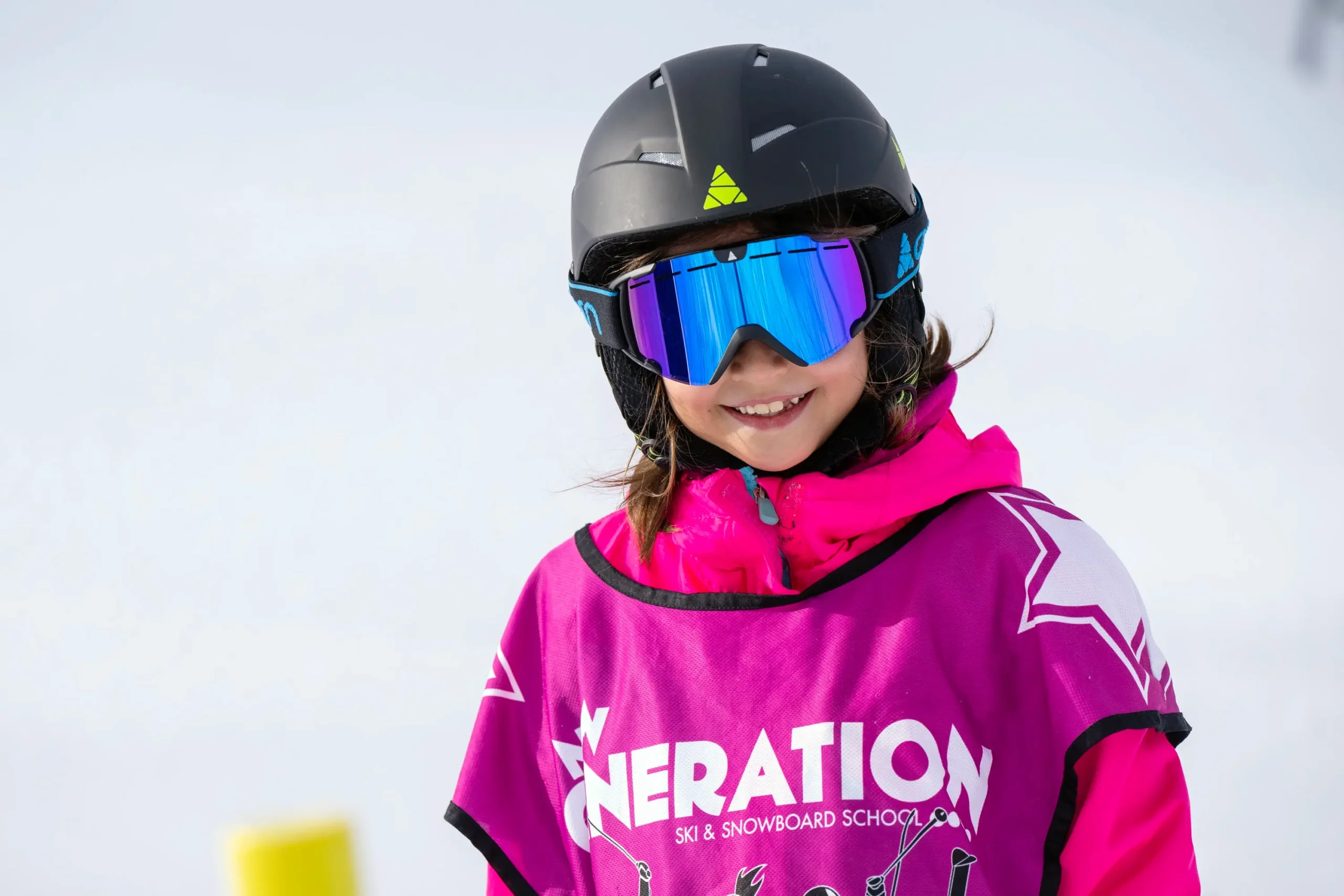
The North Face does some great thermal tops for kids.
Long-sleeved fleece (mid-layer)
Layer a fleece on top of the thermal base layer to keep the heat trapped close to the body so your child will feel warm for longer. Preferably, choose one with a full zip so your child can easily unzip it if they’re too hot, or take it off in a restaurant at lunch.
Ski jackets (outer layer)
To appropriately dress your child for skiing, they will need a waterproof and lined outer layer and an insulated jacket.
Check that it has a pocket in the left arm to put the lift pass in (as the lift pass scanners are on the left-hand side) and pockets big enough to keep a cereal bar and hand warmers.
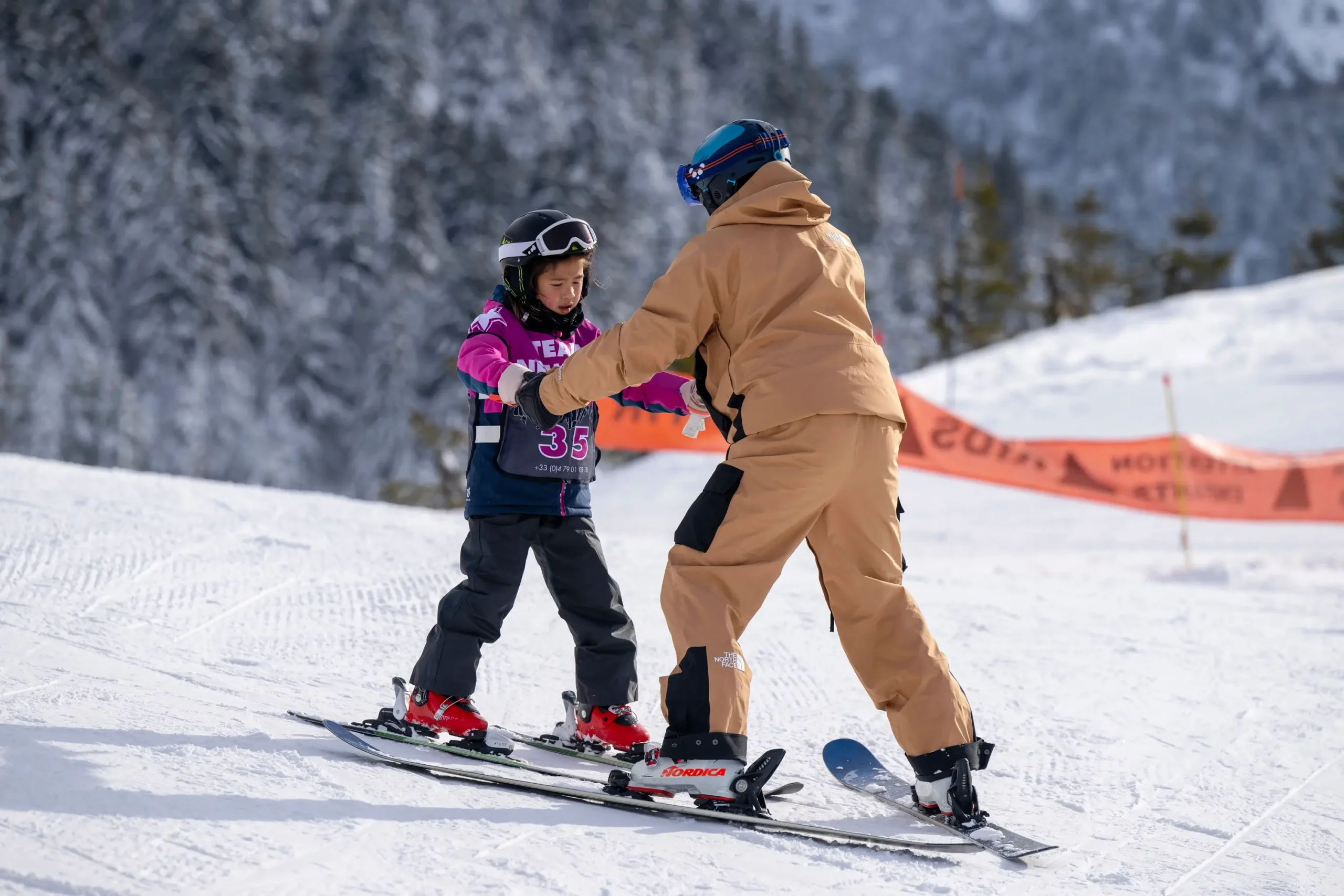
Ellis Brigham has a fantastic selection of ski jackets for kids.
Keep their legs warm.
Thermal leggings
These should be tight-fitting and consist of warm, breathable fabric. But most importantly, the bottoms should be pulled up to the knees so that the socks meet the leggings and don’t overlap.
There should be no layering or bunching inside the ski boots to avoid rubbing on the shins. You can now buy shorter leggings that don’t go right down to the ankles, so they don’t need pulling and scrunching up.
Even better, you can now buy tights for kids who have ski socks built into them, which means that you’ve no bunching, the socks can’t fall or twist, and the leggings can’t overlap.
Ski bib pants vs. normal salopettes?
Bib pants are ski salopettes that come up to their chests and higher up their back. This is useful so that the snow doesn’t get into their thermals or go down their back if they fall over.
Put their ski pants on over the top of their mid-layer fleece and avoid tucking any of the pants into the ski boot. They should go over the ski boot if possible.
Some ski pants have reinforced knees for kids, which helps keep kids dry and warm and means they will last longer than thinner ski trousers.
We couldn’t decide between bib pants and regular ski pants in the office, so we’ve concluded it’s personal Kid’s Ski Clothing preference over bib pants or trousers.
Some of our team believe bib pants are better for children under six as they keep their bodies warm. But it can be more difficult for younger children to get off in a rush to the toilet.
Others believe bib pants are better for older children as they can take them on and off themselves and usually have more time before they need the toilet. It all depends on your child’s development and bathroom routine.
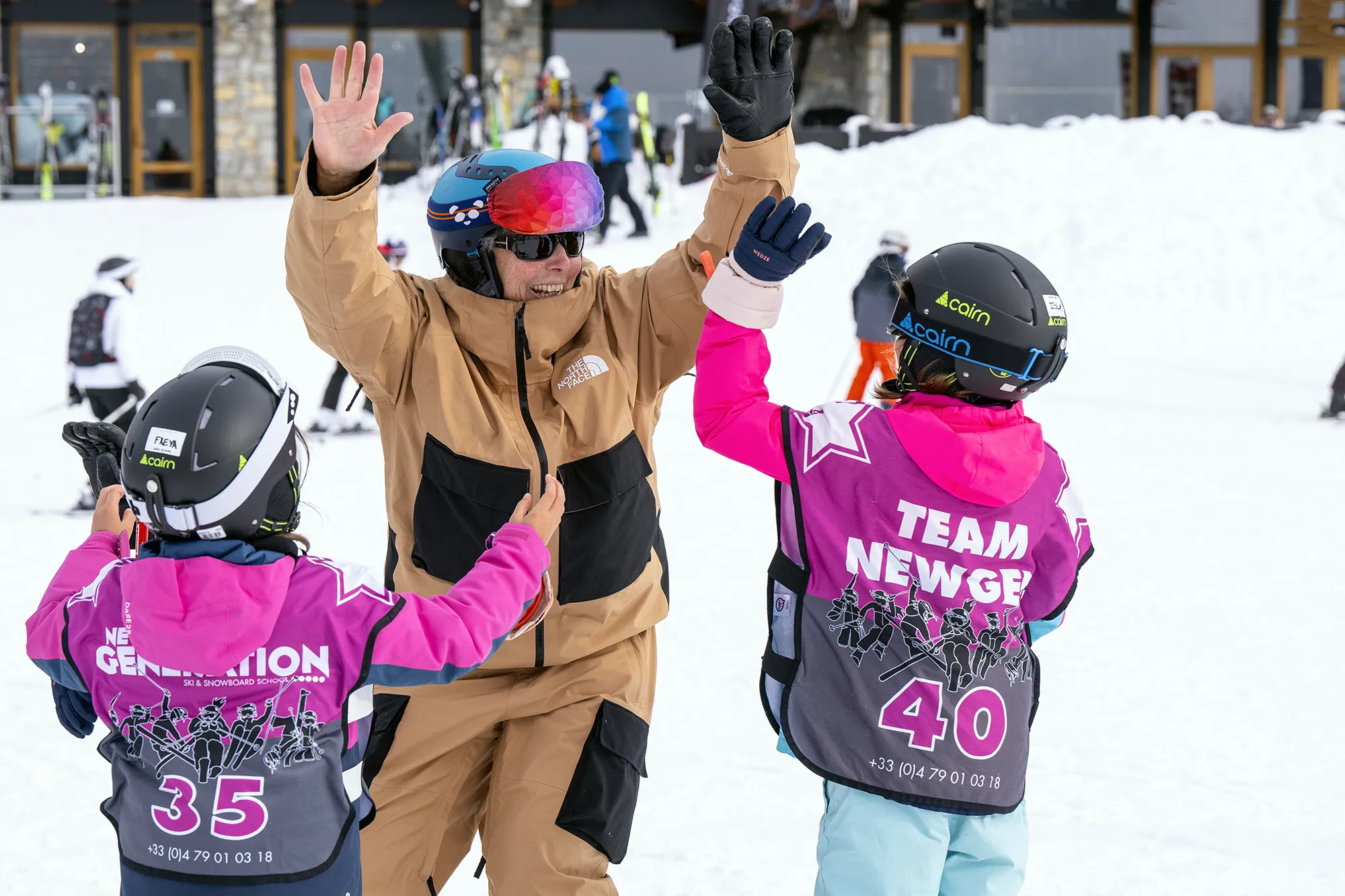
Keeping kids warm: What to put on their feet
Good quality ski socks
Your child should wear one pair of good-quality ski socks. Don’t be tempted to double them up. They don’t need more than one pair of socks at a time, as they will rub and cause irritation. The socks must be long enough to reach just below the knee to clear the top of the ski boot to avoid rubbing.
Ensure they have clean ski socks daily, especially on cold days. Even if they’re dry and appear or smell clean if they have sweated in them the day before, they hold this moisture, and their feet will become colder much quicker.
Dry ski boots
The best way to ensure that ski boots are dry is to take the liner out of them and leave it to dry overnight. Often, the inside of the boot can feel dry enough, but when you remove the liner, you find condensation on it.
Here’s how to take the liners out of your boots.
For general use in and around the resort, ensure your children have decent snow boots to keep their feet dry when walking through town or playing in the snow.
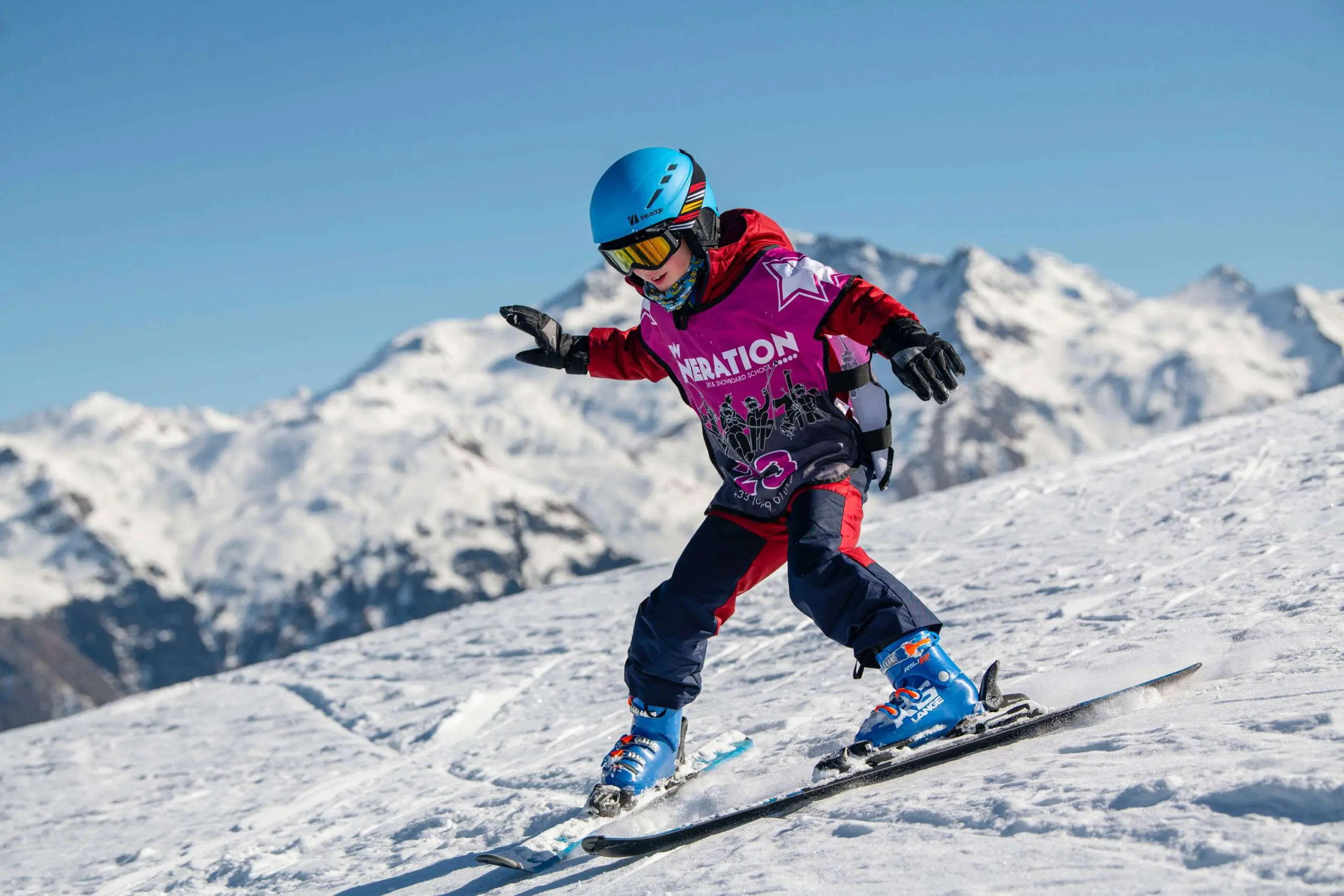
What to buy for your first ski trip
How to protect their face from the elements
Balaclava
Perhaps the best piece of Kid’s Ski Clothing we have ever bought for ski kids. Made of a thin, light material and worn under a helmet. This makes the helmet comfortable to wear and keeps the neck, face and head warm.
Unlike neck warmers, the part over their chin and cheeks doesn’t fall, meaning that only the tip of their nose is showing for cold days. It also helps to keep long hair out of their face, which means fewer tears at bath time! And if the day warms up, they can pull it down around their neck and use it as a neck warmer.
Helmet
Most ski hire shops will now rent helmets with the children’s equipment for a low price. If you’re looking to buy one, look for one that is adjustable at the back so that it may last longer as it grows.
With a clip at the back to hold the goggles in place, which will make your child feel much more comfortable when getting ready for a day on the slopes.
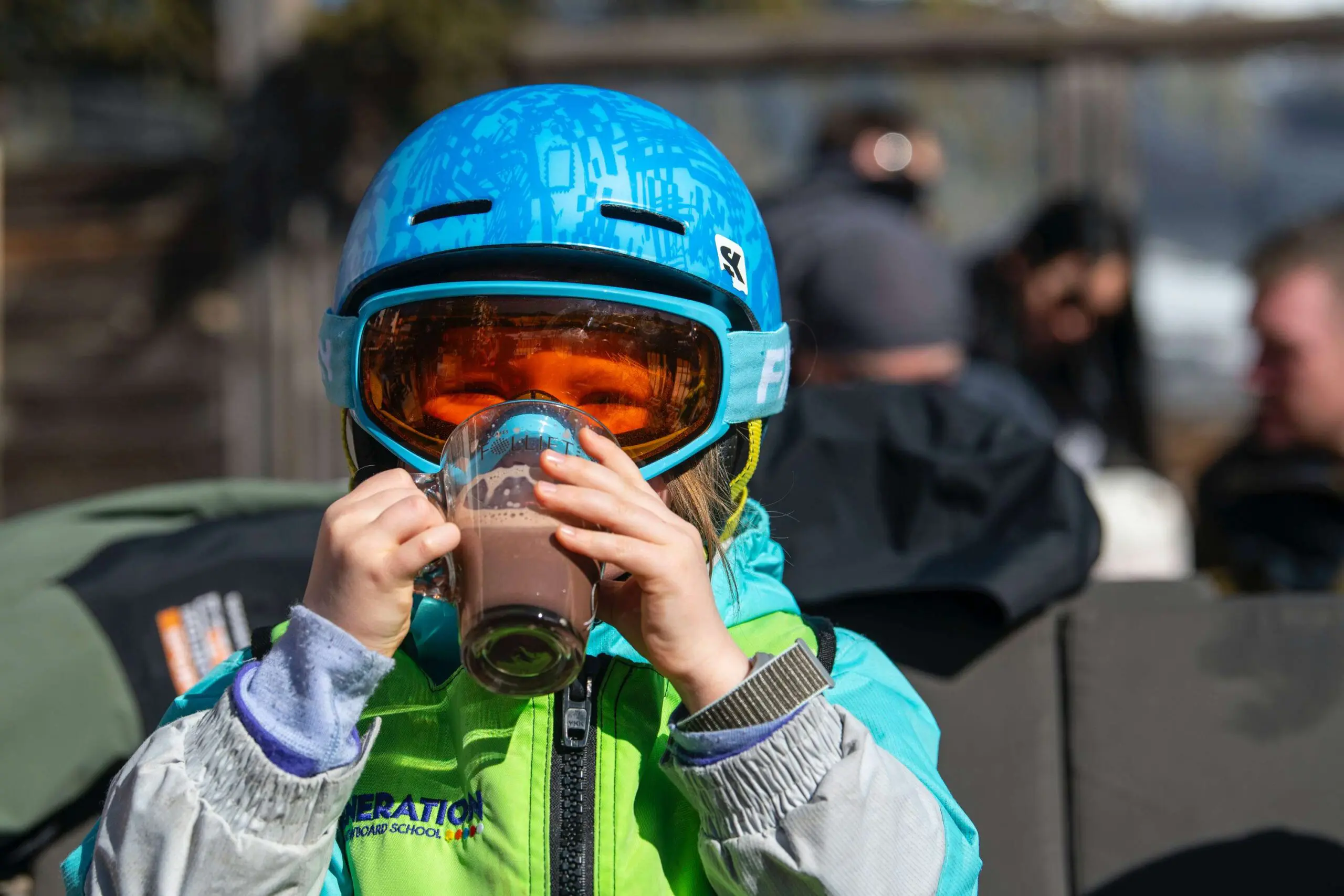
Goggles
Put goggles on your child, not sunglasses. They protect more of their face from cold weather or harsh sun, their eyes don’t run when they ski fast, and they’re less likely to fall off.
If you own a helmet for your child, take it to the shop when you purchase the goggles to ensure it fits well with the helmet. Try to ensure it doesn’t create too much of a gap between the top of the goggles and the helmet, as otherwise. They will get a cold forehead.
On a sunny day, they should have at least a category three lens to protect their eyes from the sun. You can now buy photochromic goggles that change colour depending on the light levels, which avoids needing different lenses – whether it’s a whiteout or a sunny day.
Typically, yellow lenses are used on bad weather days, and we recommend wearing more reflective goggles on brighter days. Take the goggles off the helmet and put them inside it to avoid getting scratched or lost.
If you’d prefer to rent instead of buying, look at EcoSki, a company that rents out ski equipment for your time on the mountain. They have plenty of mid-layers, snowsuits, hats, jackets and more Kid’s Ski Clothing!
How to keep their hands toasty all-day
Gloves vs. mittens?
Gloves can be the most challenging item of kid’s ski clothing to keep on. There are so many poorly designed gloves on the market, so finding the right pair your kids will want to keep wearing is essential.
Kids must wear gloves on the slopes. If you want to learn more about skiing safely with kids, we have many tips and tricks to make your holiday run smoothly. An example of a great glove has the following:
- Mittens (rather than gloves) are far warmer and easier to get on and off.
- Choose a waterproof mitten with a long part that comes up and over the wrist and arm and is, most importantly, broad so they’re easy to get on and off. Many mittens on sale are too narrow around the wrist, which means they need to be worn under the coat sleeve to keep them on the hand. It is impractical if your child takes their mitten off and struggles to get them back on under their sleeve.
- Even better if it has an elastic loop to put around the wrist as your child, so they can take off their mittens and not drop them as they will still be attached to their arms.
Always keep some hand warmers in your child’s coat pocket to save the day on an icy day. They can open these and put them inside their gloves, lasting up to 8 hours. You can buy disposable and reusable hand warmers. If you’d like to read more about other ways to dress your child for skiing and another eight ways to stay warm on the slopes, click here.
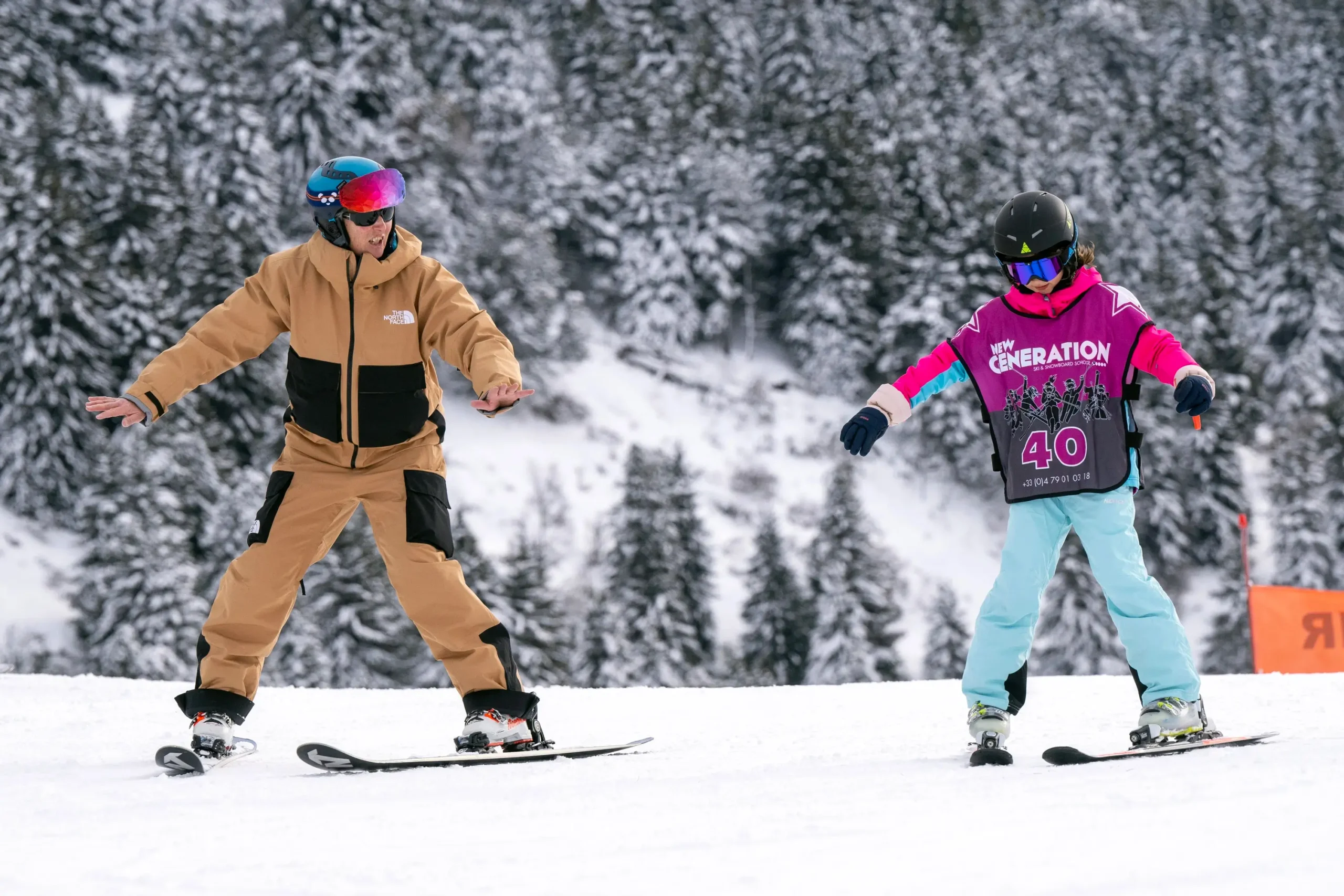
Tips for a successful family ski trip
Ready for ski school?
Book your children into ski lessons with us if you’re ready to go. Leave the warm air of the hotel behind and layer up for a day on the slopes. Kids have so much fun in the snow. We love sharing the mountains with them. We’ve even got a new kid’s programme to help them progress into the mountain’s safest, most capable skiers.
We offer group and private ski lessons, and depending on your child’s age, we also have ski lessons for teenagers. We can ensure you have the dream ski holiday you’ve always wanted by helping you make unforgettable memories on the slopes as a family.
Looking to buy some new Kid’s Ski Clothing? Sign up below to receive 10% off at Ellis Brigham

